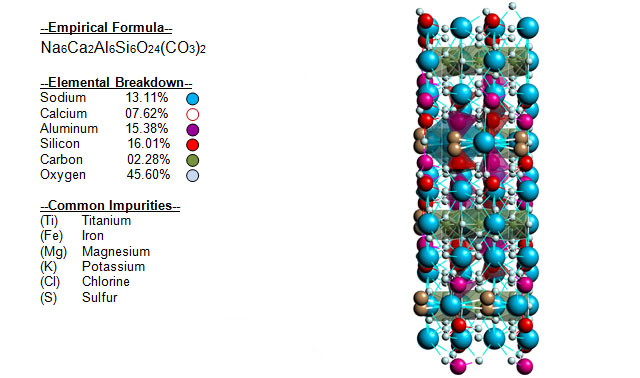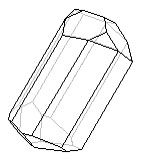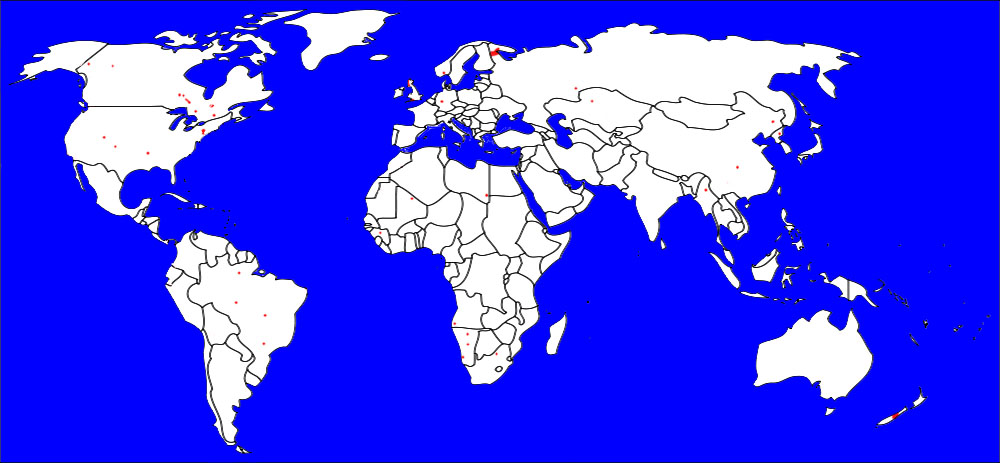

| Mineral Name | Cancrinite |
| First Discovered | 1839 |
| Nickel-Strunz Classification | 09.DA.15 |
| Dana Classification | 65.01.03a.03 |
| ICSD | 9257 |
| Mineral Group | Silicates - Inosilicate in the feldspar group |

| Cleavage | Perfect |
| Colour(s) | Blue, Colourless, Gray green, Yellow, White |
| Specific Gravity | 2.45 |
| Diaphaneity | Translucent to Transparent |
| Fracture | Conchoidal - Very brittle fracture producing small concoidal fragments |
| Mohs Hardness | 6.0 |
| Luminescence | Non-fluorescent |
| Luster | Vitreous |
| Streak | White |
| Habit(s) | Massive to Prismatic |
| Radioactivity | Non-radioactive |
| Magnetism | Non-magnetic |

No known health risks have been associated with cancrinite. However ingestion of cancrinite, as with other naturally occurring minerals, is not recommended.

The following image shows the elemental breakdown of the mineral cancrinite along with the mineral crystal structure.


| Crystal System | Hexagonal |  |
| Class | Pyramidal | |
| Axial Ratios | a : c = 1 : 0.40551 | |
| Morphology | Rarely prismatic crystals | |
| Optical Data Type | Uniaxial (+/-) | |
| Dichroism (e) | Colourless | |
| Dichroism (w) | Colourless | |
| Pleochroism (z) | None | |
| RL Values | nω = 1.507 - 1.528 nε = 1.495 - 1.503 |  |
| 2V | N/A | |
| Max Birefringence | δ = 0.012 - 0.025 (See colour chart at right) | |
| Surface Relief | Low | |

Cancrinite cannot be referenced in certain current and historical texts under any other names:
Other than in the basic mineral form, cancrinite cannot be found in any other distinct varieties:
The mineral cancrinite can be translated into the following select languages:
| Arabic | Bulgarian | Chinese (Sim) | 钙霞石 | ||
| Croatian | Czech | Danish | |||
| Dutch | cancriniet | Esperanto | Estonian | ||
| Finnish | French | German | Cancrinit | ||
| Greek | κανκρινίτης | Hebrew | Hungarian | ||
| Italian | Japanese | カンクリナイト | Korean | 칸크리나읻 | |
| Latin | Lithuanian | Norwegian | |||
| Persian | Polish | Portuguese | cancrinita | ||
| Romanian | Russian | Канкринит | Slovak | ||
| Spanish | Cancrinita | Swedish | Tagalog | ||
| Turkish | kankrinit | Ukrainian | Канкрін | Vietnamese |

Cancrinite can be found in a few places around the world. The map below shows major documented concentrations of cancrinite:


 |
The MIROFOSS database offers free printable geological identification tags for personal and non-profit use. These tags can be used to properly identify mineral samples in your collection. -Click here- to download a full size jpeg image for a cancrinite identification tag; which can be printed on paper or used with a plastic laser printer. |
 |
What's this? What can I do with it? |

| Chemical Composition | Deer, W.A., R.A. Howie, and J. Zussman (1963) Rock-forming minerals, vol. 4, framework silicates, 310-320. |
| Crystallography | Grundy, H.D. and I. Hassan (1982) The crystal structure of a carbonate-rich cancrinite. Canadian Mineralogist: 20: 239-251. |
| Optical Data | Dana, E.S. (1892) System of Mineralogy, 6th. Edition, New York: 427-428. |
| History | Canadian Mineralogist: 20: 239-251. |
| History | Anthony, J.W., Bideaux, R.A., Bladh, K.W., and Nichols, M.C. (1995) Handbook of Mineralogy, Volume II. Silica, Silicates. Mineral Data Publishing, Tucson, AZ, 904pp., 2 sub-volumes: 109. |
| Geographical Data | Mindat.org. Retrieved on 2012-08-10 |
| Physical Identification | Webmineral.com. Retrieved on 2012-08-10 |
| November 24, 2013 | The last time this page was updated |
| ©2017 MIROFOSS™ Foundation | |
 |